How to Propagate Prickly Pear Cactus (Opuntia): Grow More of This Iconic Paddle Cactus
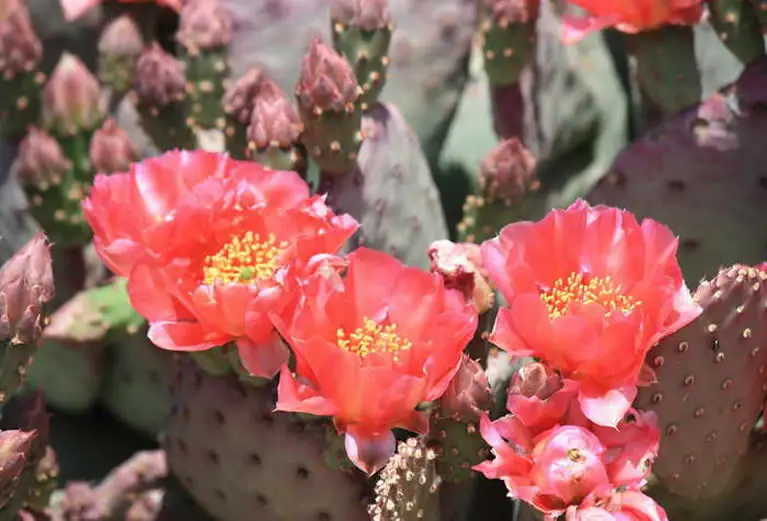
Prickly pear cactus is one of the easiest cacti to propagate, whether you’re growing it for its bold, paddle-like shape or its edible fruits. With just a single pad and some dry soil, you can quickly multiply your Opuntia collection—and it doesn’t require special tools or skills.
Table of Contents
- Why Propagation Is So Easy with Opuntia
- Propagation by Pads (Most Common Method)
- Propagation by Division (For Large Outdoor Plants)
- Water Propagation (Not Recommended)
- Bonus Tip: Fertilizer Boost for New Pads
- Outdoor Propagation Tips
- Common Issues to Avoid
- Popular Opuntia Varieties to Propagate
- Final Thoughts
Why Propagation Is So Easy with Opuntia
Native to the Americas, especially Mexico and the U.S. Southwest, Opuntia species are adapted to spread naturally through detached pads that root where they fall.
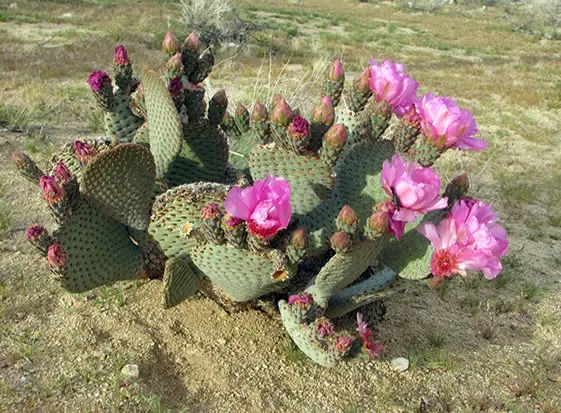
These methods work for all major varieties, including Bunny Ears (Opuntia microdasys), Santa Rita, Beavertail, Baby Rita, Engelmannii, and ficus-indica.
Propagation by Pads (Most Common Method)
This is the fastest and most beginner-friendly way to propagate prickly pears.
-
Select a mature pad: Choose one that is healthy, firm, and fully grown. Avoid young, floppy pads.
-
Detach carefully: Use thick gloves and tongs to snap or slice the pad off at the joint.
-
Let it callous: Place the pad in a dry, shaded area for 5–10 days to allow the cut end to dry and form a callous.
-
Plant upright: Insert the calloused end about 1–2 inches into dry, well-draining soil.
-
Wait to water: Don’t water for 7–10 days to prevent rot, then water lightly and only when soil is fully dry.
Rooting takes about 2–6 weeks, depending on heat and light. New pads signal successful propagation.
Propagation by Division (For Large Outdoor Plants)
If your prickly pear is growing in clumps, division is a quick way to create fully rooted new plants.
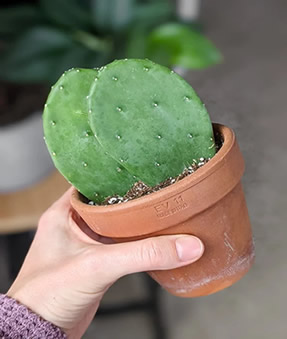
-
Dig up part of the clump: Use a spade and gloves to lift a section with both pads and roots.
-
Separate with care: Break or cut sections cleanly at the base.
-
Replant in new containers or directly into the ground in well-draining soil.
-
Hold off on watering for a few days to let any breaks heal.
This method works especially well with low-growing varieties like humifusa or basilaris.
Water Propagation (Not Recommended)
Prickly pear cactus is not suited for water propagation.
The pads are water-storing organs, and placing them in water almost always leads to rot.
If you’re looking to root a pad, dry soil is the safest and most reliable option.
Bonus Tip: Fertilizer Boost for New Pads
Once your new pad has rooted and is showing signs of growth, give it a gentle feeding.
Add a diluted cactus fertilizer with a low nitrogen ratio like 2-7-7 like this one to your watering routine once a month during the growing season.
This helps support strong roots and healthy pads.
Outdoor Propagation Tips
In warmer climates, you can propagate Opuntia directly in your garden:
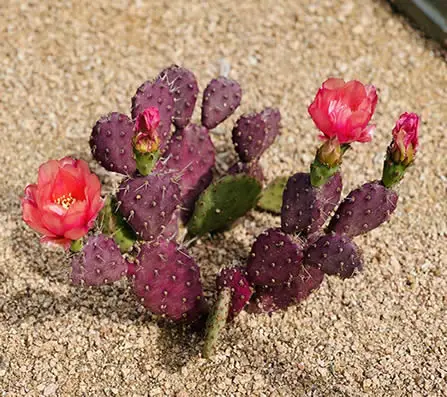
-
Choose spring or early summer when the soil is warm and dry.
-
Plant pads upright and deep enough to remain stable in wind.
-
Space them widely—Opuntia spreads fast and wide once established.
In cooler zones, root pads indoors or in containers, and move them outside once rooted and temperatures stay above 50°F (10°C).
Common Issues to Avoid
Rotting pad – Caused by watering too soon or planting before the pad was fully calloused.
Always dry first and use gritty soil.
No roots after weeks – Check that the pad is in a warm, bright area.
Cool or dim conditions can slow rooting dramatically.
Shriveled pad – Some shrinkage is normal.
Once roots form, the pad will plump up again after watering.
Pad falls over – Use small rocks or a shallow stake to support it until roots anchor it.
Popular Opuntia Varieties to Propagate
All of these varieties can be propagated using pad cuttings or clump division:
-
Opuntia microdasys (‘Bunny Ears’) – Small pads with golden or white glochids.
-
Opuntia santa-rita – Purple-toned pads that deepen with stress or cold.
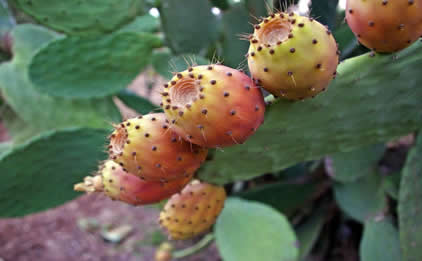
Opuntia ficus indica -
Opuntia ficus-indica – The classic edible prickly pear, often grown for nopales and tunas.
-
Opuntia humifusa – Cold-hardy and ideal for ground cover in temperate zones.
-
Opuntia basilaris (‘Beavertail’) – Flat, blue-gray pads and vivid pink flowers.
-
Opuntia ‘Baby Rita’ – Dwarf variety great for containers with purple blushing.
-
Opuntia engelmannii – Tall and spreading, with large yellow flowers and sweet fruits.
Each of these varieties roots quickly and makes excellent starter plants for outdoor xeriscaping or container gardens.
Final Thoughts
Prickly pear cactus is one of the most satisfying succulents to propagate.
With nothing more than a single pad and some dry soil, you can grow dozens of new plants that are as tough and beautiful as the original.
Whether you’re creating a desert landscape or adding texture to your sunny windowsill, propagation makes it easy to keep the Opuntia magic going.
Read our guide Prickly Pear Cactus Care: How to Grow These Iconic Paddle Cacti at Home for detailed care instructions for this succulent.
Thanks for reading! I'm Michael — houseplant fanatic and your Pinterest plant guide.
Follow me on Pinterest for fresh updates 🌿



